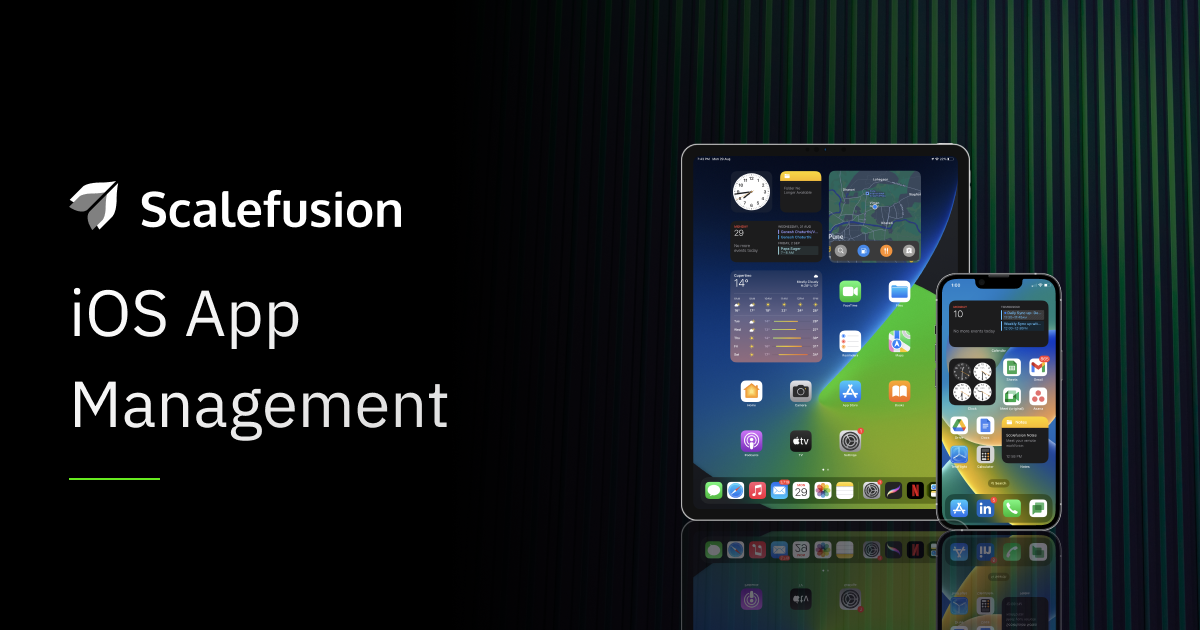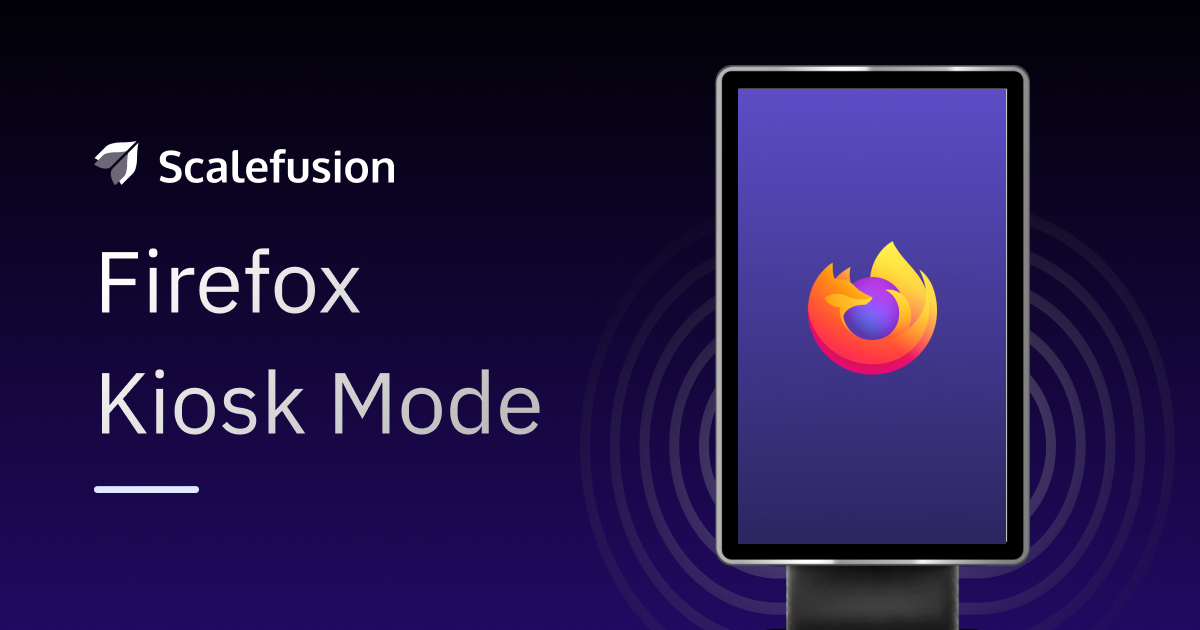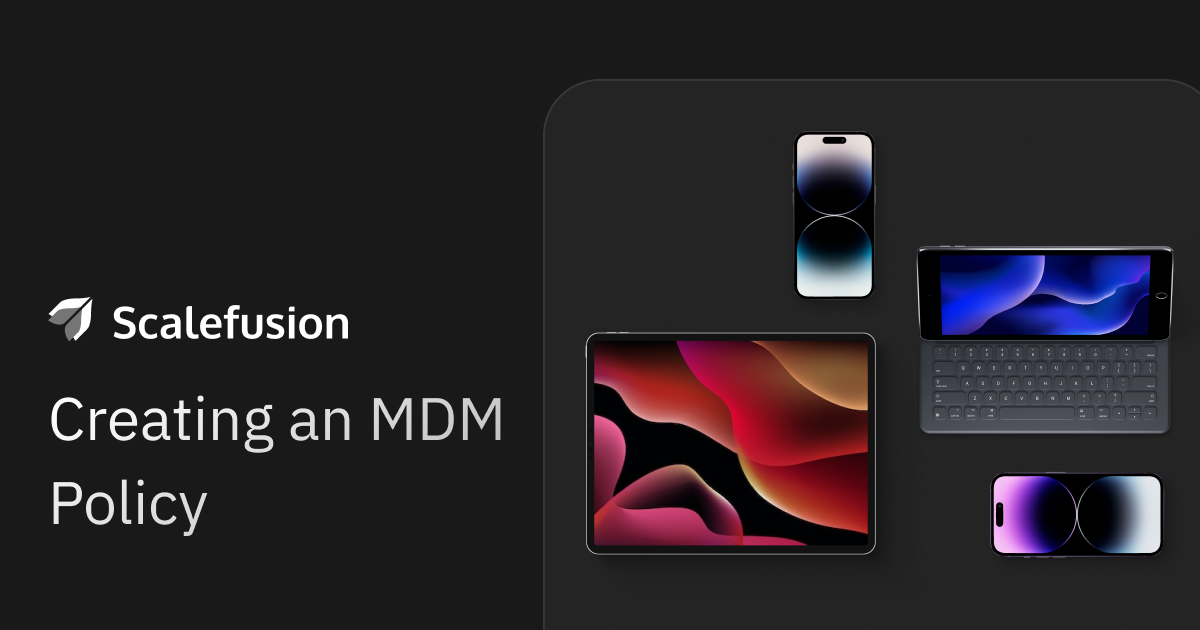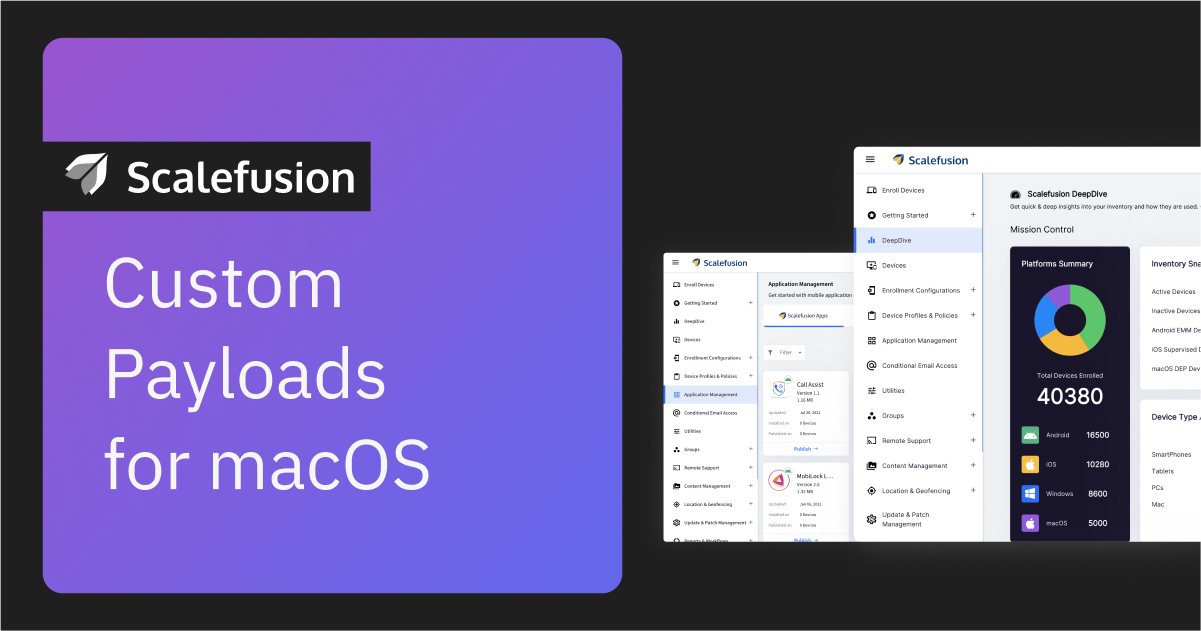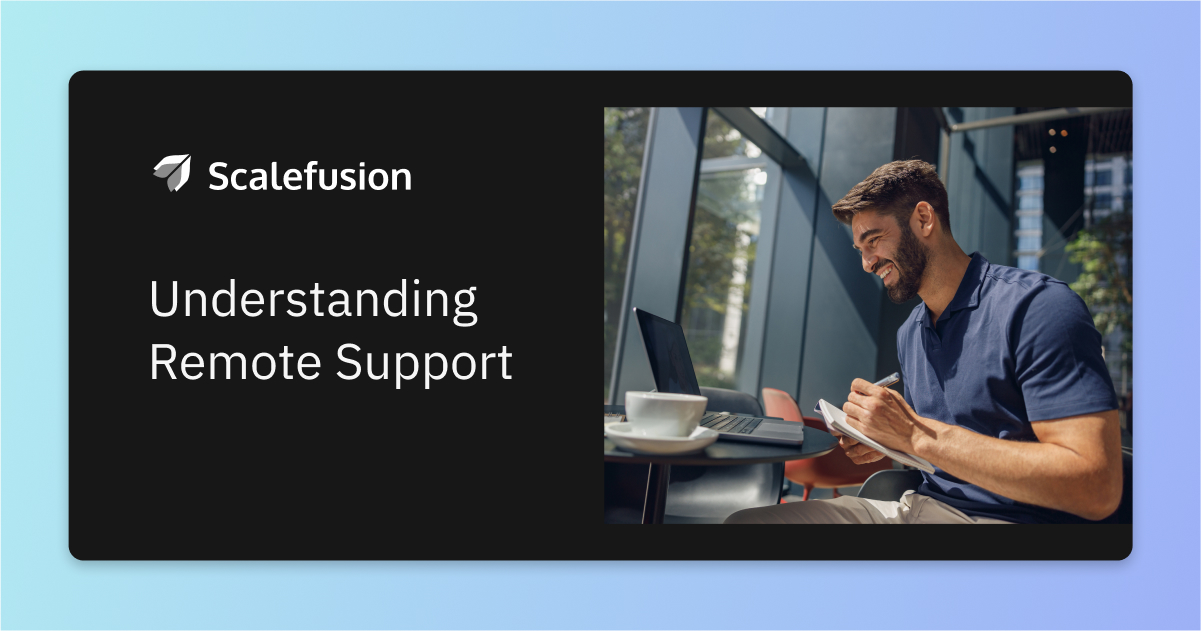
As businesses adopt remote and hybrid work models alongside traditional on-site operations, the question of “How to manage remote devices?” has become crucial for organizations and IT teams alike. Remote IT support plays a vital role in this context by enabling IT admins to troubleshoot, manage, and maintain device fleets efficiently, irrespective of physical presence or user intervention.
When combined with Unified Endpoint Management (UEM), remote IT support becomes more powerful, streamlining device support and management across various platforms. In this blog, we will understand the concept of remote IT support and the role of Scalefusion UEM in making it more effective and streamlined.
What is Remote IT Support?
Remote IT support allows IT admins to remotely access and control other mobile devices to provide technical assistance. IT teams can control the device’s screen, keyboard, and mouse to diagnose and resolve issues instantly.
Technicians can establish an instant connection to the user’s device, regardless of their geographical location, making the process of providing support more efficient and effective. This hands-on approach is more effective than traditional support methods that rely on verbal instructions over the phone.
With remote support, IT administrators interact with the user’s screen in real-time, providing immediate resolution and advising on how to prevent future problems. Enhanced remote support software has made the dependency on physical presence irrelevant, ensuring the support provided is seamless and efficient.
By using remote access for IT support, organizations reduce downtime, improve response times, and enhance overall productivity. It is a crucial component of modern IT support strategies, enabling quick resolution and contributing to smoother, uninterrupted operations.
Types of Remote Support
Remote support is generally divided into two categories: unattended and attended. The difference between attended and unattended remote support is based on whether an end user is present on the remote device while an IT technician provides assistance.
1. Unattended Remote Support
Unattended remote support allows IT technicians to control and troubleshoot devices remotely without the need for an end user. This capability is enabled by deploying an agent app on all work devices, which allows technicians to gain remote access whenever needed.
With the agent installed, IT teams can perform a wide range of tasks, such as troubleshooting, patch management, software updates, and routine maintenance, even outside regular office hours. This approach minimizes disruption in the end-user’s work, as support activities can be carried out when the device is idle.
Unattended remote support is particularly useful for network management and ongoing maintenance. It ensures remote devices are kept up-to-date and functional without requiring user intervention. This method enhances efficiency and flexibility, enabling continuous support of IT infrastructure.
2. Attended Remote Support
Attended remote support is also known as on-demand or ad hoc support. It allows IT technicians to access a device when end users request assistance and require their presence on the remote device.
Attended remote support does not require prior setup. The end user establishes the remote connection by running the support tool’s app or software to generate a unique session code, which is provided to the IT admin. This code grants admin access to the device, allowing them to take control and resolve the issue.
Attended remote support is versatile, allowing IT help desk professionals to support both managed and personal devices. Technicians can initiate sessions instantly or schedule them at a convenient time for the user. The user’s presence eliminates the need for specialized pre-installed software, as the connection is authorized through a one-time session code.
How does Remote IT Support work?
Remote support enables IT admins to access and diagnose a device through virtual access established via a cloud gateway. Using remote support software facilitates a secure and direct connection between the IT admin and end-user devices.
Beyond basic troubleshooting, remote support sessions enable technicians to perform various other tasks, such as managing files, updating software, or performing OS diagnostics.
Challenges of Remote IT Support
1. Communication Barrier
Due to the lack of face-to-face interaction, end users often struggle to describe their issues accurately, while technicians find it difficult to explain solutions in an easily understandable way. The absence of visual cues and immediate feedback complicates the process further, leading to potential misunderstandings and increased device downtime.
2. End-user Dependence
End-user dependence is a significant challenge in implementing remote support, as it requires end-users to provide access to their devices and follow instructions. Many users may feel uncomfortable or hesitant about granting remote access, have limited technical knowledge, or lack the necessary administrative privileges, which can hinder the support process.
Benefits of Remote IT Support
Apart from minimizing device downtime, there are a few additional but crucial benefits of remote IT support.
1. Round-the-Clock Support
Remote support enables administrators to provide continuous IT assistance, which is crucial for 24×7 working environments. IT teams can manage and troubleshoot devices at any time, eliminating the constraints of geographical location and time zones. This means that global teams can work without interruption, ensuring seamless operations. Systems can be kept up and running efficiently, as IT support is always available to address issues promptly, maintaining business continuity.
2. Quick Resolution
With remote support, IT technicians can swiftly identify and resolve issues. This immediate response capability ensures that critical work remains uninterrupted, enhancing overall productivity. IT operations can handle a higher volume of issues in a shorter time, improving operational efficiency.
3. Cost-Effective
Remote support reduces the necessity for on-site visits, which significantly lowers travel expenses and saves the time invested by IT personnel. By addressing technical issues remotely, companies can reallocate these saved resources (time and money) to other critical areas, optimizing their budget. Furthermore, quick and efficient resolution of issues minimizes the risk of high downtime costs, contributing to better financial health and resource management.
4. End-user Satisfaction
Remote IT support reduces end user’s waiting period. Quick resolution of issues means minimal disruption to their work, allowing them to maintain consistency and productivity in their ongoing work. This rapid and effective handling of technical problems reduces frustrations and enhances the user experience. End users appreciate the prompt assistance, which leads to higher satisfaction and a more positive perception of the IT support team.
Implementing Remote IT Support with Scalefusion UEM
A UEM offers a centralized solution for IT admins to offer quick remote support to the end-users. Scalefusion UEM offers the following remote IT support capabilities:
1. Remote Cast and Control
With Scalefusion’s Remote Cast and Control, IT teams can project device screens directly onto the Scalefusion dashboard in real-time. This feature allows administrators to view and interact with the device screen for more effective troubleshooting. They can push files to the device, download files for inspection, or delete unnecessary or harmful files remotely.
Additionally, IT staff can capture screenshots and screen recordings to document issues or actions taken for further analysis. This eliminates the need for end-user involvement during troubleshooting, offering full hands-on assistance and complete remote device control, ensuring swift and effective resolution.
2. VoIP Calling
Scalefusion enhances the remote support experience by integrating VoIP calling capabilities. This feature significantly improves communication between IT technicians and end users, allowing for real-time, clear, and direct conversations.
Technicians can guide users through troubleshooting steps, gather detailed information about issues, and provide immediate feedback. This direct line of communication ensures end users receive timely and effective assistance, reducing the time needed to resolve issues and enhancing overall support quality.
3. Remote Commands
IT teams can send remote commands to managed devices to launch specific activities, start services, or broadcast messages to devices. IT technicians can also send commands to launch or delete files from specific folders or install APK files present on the device, streamlining the process of file management and app deployment. This capability allows for proactive maintenance and rapid response to emerging issues, improving the overall efficiency of IT operations.
4. Integration with ITSM Tools
Scalefusion simplifies the support process by integrating with ITSM platforms like Jira and Freshservice. This integration allows for the automatic creation of context-aware support tickets that include relevant device information and issue details.
By streamlining the ticketing process, Scalefusion ensures support requests are accurately documented and quickly addressed. This reduces the administrative burden on IT staff and accelerates the resolution of support issues, leading to improved service delivery and user satisfaction.
5. Multi-OS Support
Scalefusion provides comprehensive support for various operating systems, including Android, Windows, iOS, and macOS. IT admins can also access Linux devices directly from the Scalefusion dashboard using the feature of Remote Terminal. This multi-OS support ensures IT teams can manage a diverse array of devices from a single, unified platform.
By offering consistent remote support capabilities across different operating systems, Scalefusion enables organizations to ensure that all devices receive the same level of support and management regardless of their platform. This benefits organizations with a varied device ecosystem, simplifying device management and support and enhancing overall productivity.
Choose Scalefusion UEM for Better Remote IT Support
A UEM solution for remote support offers a comprehensive means for managing and troubleshooting devices remotely. With Scalefusion UEM, organizations can streamline troubleshooting processes, improve response times, and ensure consistent IT support, optimizing IT efficiency and enhancing overall device management capabilities.
Speak to our experts for a demo. Sign up for a 14-day free trial.
FAQs
1. What is remote support software?
Remote support software, also known as a remote support system, enables IT teams to provide technical assistance to devices from a distant location. It allows IT administrators to access and control computers or mobile devices remotely to diagnose and resolve issues without needing to be physically present. This software facilitates efficient troubleshooting and maintenance tasks, enhancing productivity and minimizing downtime for organizations.
2. How do I manage my remote devices?
Managing remote devices involves leveraging remote technical assistance to ensure seamless operations across dispersed teams. With remote technology support, IT teams can remotely access and troubleshoot devices, install updates, and configure settings from a centralized platform. This approach enables IT administrators to maintain security protocols, optimize device performance, and provide timely support to remote employees, regardless of their geographical location.
3. What is remote assistance?
Remote assistance refers to providing IT support remotely, where IT professionals can access and troubleshoot devices from a different location than the user. This method of support allows technicians to diagnose issues, perform software updates, and resolve technical problems without needing physical access to the device. Remote assistance ensures efficient problem-solving and enhances user satisfaction by minimizing downtime and disruptions in workflow.

